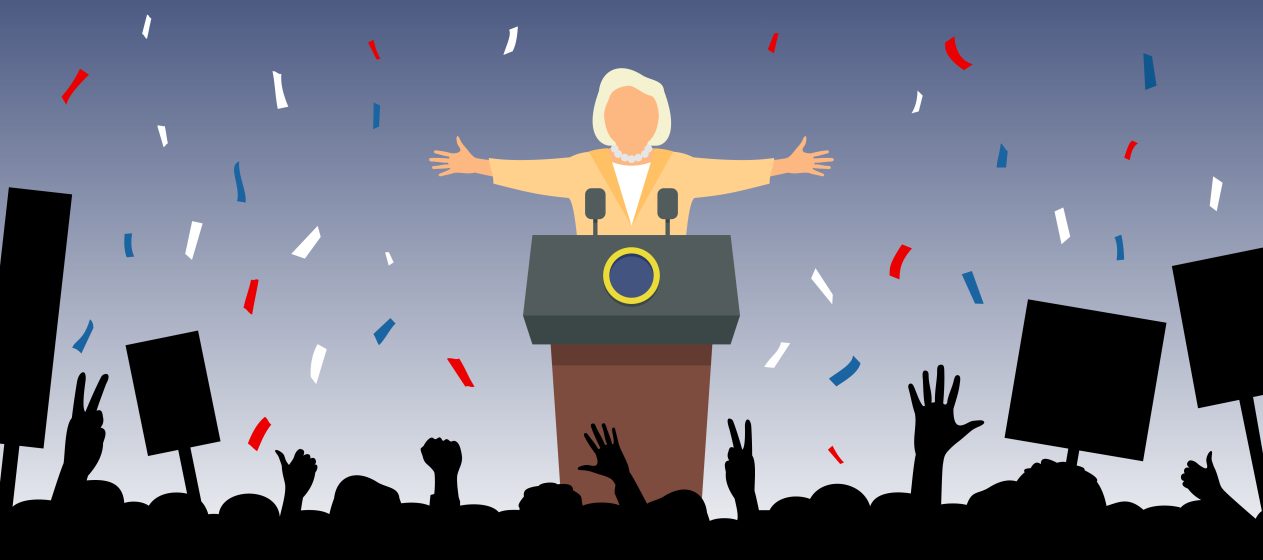Visual campaigning is not new to the social media era. In the US, the first political cartoon was published by Benjamin Franklin in political pamphlets in 1747. Visual symbols such as the bald eagle, stars and stripes, and the colours of red, white and blue have been used in campaign posters going back to 1828. Visual campaigning only intensified from the 1960s onwards with the proliferation of television, with the first televised debate between Nixon and Kennedy in 1964 widely hailed as being a turning point. A young and charismatic Kennedy contrasted sharply with an older Nixon, who appeared sweaty and pale (Messaris 2019), and the appearance and personalities of party leaders has played an increasingly important role in political communication and public opinion.
Existing political communication methods are ill-equipped to analyse visual aspects of campaigns, especially on social media. Although the last decade has seen an increase in studies researching visual features, methods and knowledge have a long way to go to catch up with text-based approaches. Visual methods have been neglected in political research partly due to the methodological challenges of studying the visual, including the volume of images on social media. However, normative assumptions about what political communication should be have limited studies to focus primarily on text-based aspects of campaigning, which are viewed as more informative than images. In contrast, the visual is often viewed as emotional and therefore problematic, a view which the prominent visual scholar Doris Graber strongly challenges. In reality, images can convey useful information to voters. People are biologically programmed to read facial expressions to look for cues to a person’s character or motivations, and therefore seeing candidates can provide useful cues. Such visual information may be processed more quickly and with less subconscious thought than text, but this does not make it inherently ‘bad’.
Normative assumptions aside, the visual is being used by candidates in campaigns and this should be studied by political communication scholars. In the UK, the Instagram pages of Liz Truss and Rishi Sunak positioned themselves as frontrunners for heading up the Conservative Party long before the 2022 leadership election. Liz Truss had developed a curated and aesthetic Instagram account, showcasing her international trips as Foreign Secretary. In December 2021 she tweeted a Christmas photo of herself seated in front of a fireplace bordered with a globe and British flag, leading many on Twitter to accuse her of trying to look regal. Rishi Sunak hired Cass Horowitz to manage his social media (London creative agency co-founder and son of the author Anthony Horowitz), ticking many of the Instagram boxes by showing ‘behind the scenes’ shots of him getting a haircut, drinking Guinness and of course sitting with his dog.
The concept of authenticity is central to understanding visual campaigning in the social media era. As well as emphasising visual images, Meta’s Instagram emphasises building ‘authentic connections’. Although what authenticity looks like for different candidates will be different. For Donald Trump, showing private jets and golf courses on his Instagram is authentic to him, in that they reflect his life as a rich businessman. In contrast, Sunak tries to emphasise his ordinariness, showing himself drinking Guinness, wearing an England football shirt and being out with his family to counter perceptions of privilege in being married to the daughter of a billionaire.
This raises questions about what authenticity is. Shifman emphasises ‘internal authenticity’ as people staying true to their ‘inner core’ and being ‘true to themselves’. In contrast, other scholars researching authenticity emphasise indicators such as ordinariness and intimacy. Sunak for example may use Instagram to emphasise that he is a ‘man of the people’, but audiences are likely to view this as inauthentic if they do not believe he is showing his real life and personality. Either way, there is a paradox in that creating perceptions of authenticity in politics does take strategizing, although it must appear natural and not strategized. Furthermore, there is a lack of understanding as to how audiences view such attempts at authenticity. Future research should examine whether audiences see through politicians’ attempts to appear ordinary, or whether such images can create perceptions that a candidate is authentic and in touch with people.
One potential way around the authenticity problem is for candidates to include ‘ordinary people’ in their campaign materials. Citizens avoid many of the traps of appearing inauthentic because they are not media trained, they will naturally come across as more authentic. Indeed, Corbyn’s association with young people and prominent rappers did contribute to many young people perceiving him as ‘authentic’, ‘down to earth’ and ‘in touch’ with ordinary – and especially young – people. As such, who the candidate chooses to include in their images is as important as how they frame themselves. The backgrounds and demographics of citizens included in campaign images can signal messages about who a candidate will represent if elected. This evidenced by the Instagram pages of Donald Trump and Bernie Sanders in 2019, where Trump primarily used images of white men, while Sanders included a more diverse range of people.
Overall, visual campaigning is likely to become even more important in future campaigns with the prominence of visual platforms such as Instagram and TikTok. Authenticity is particularly important in the social media age, and scholars now need to consider how to study such phenomena. Visual methods will be increasingly important to political communication as we seek to understand campaigning and its impacts.







